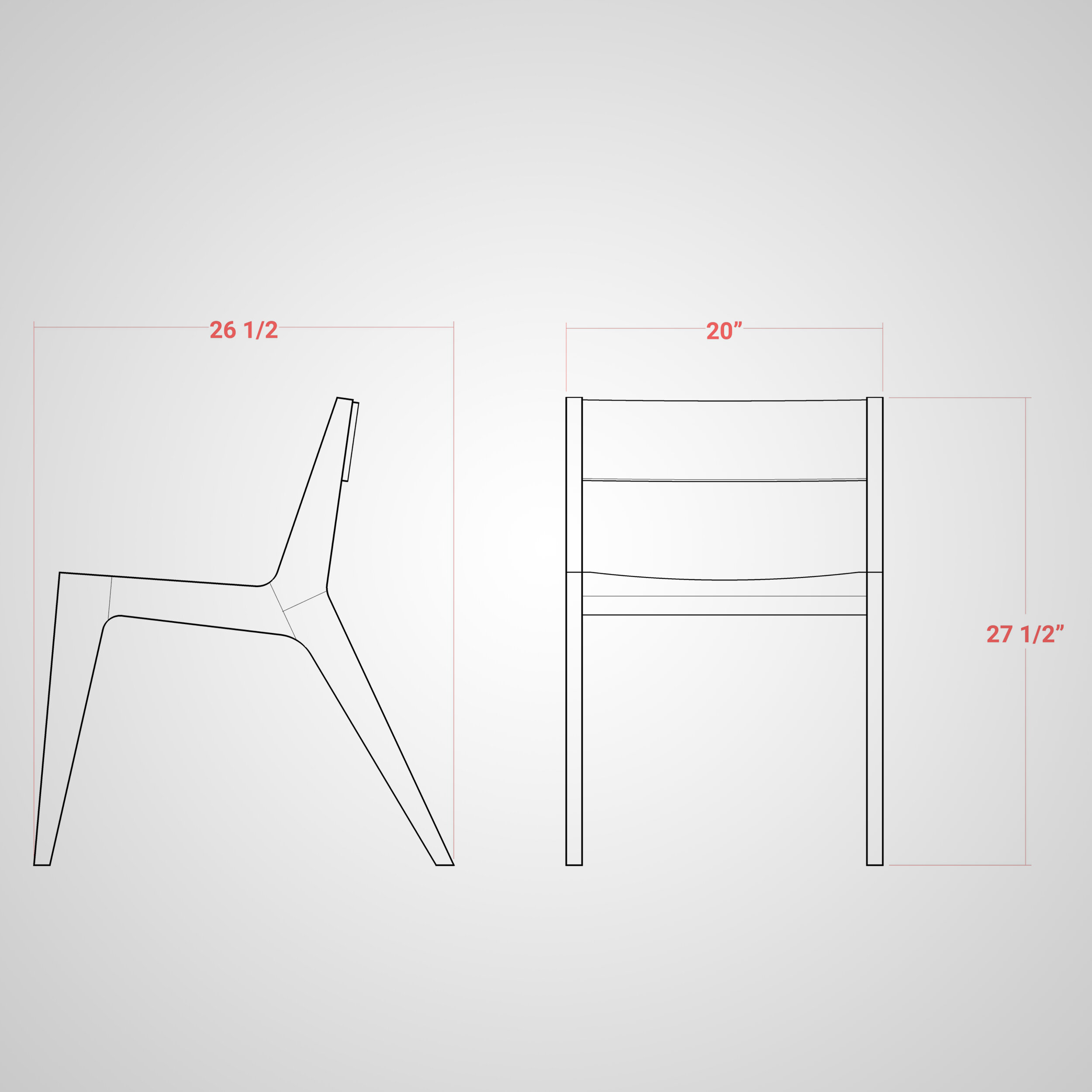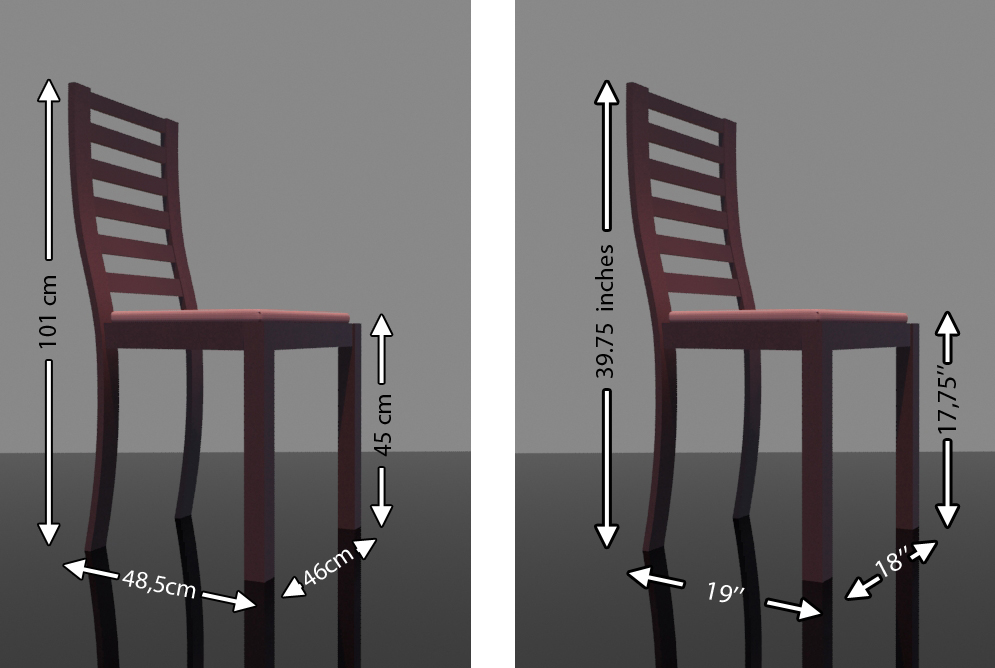Understanding Dining Chair Dimensions

Choosing the right dining chairs is crucial for creating a comfortable and functional dining space. Understanding dining chair dimensions is essential for ensuring proper seating comfort and a perfect fit with your dining table. By considering factors such as seat height, width, depth, and back height, you can select chairs that complement your table and cater to the needs of your family and guests.
Standard Dining Chair Dimensions
Standard dining chair dimensions provide a general guideline for comfortable seating. These dimensions are typically based on average adult body measurements and are designed to provide adequate support and space.
- Seat Height: The seat height is the distance from the floor to the top of the seat cushion. A standard seat height for dining chairs ranges from 45 to 50 cm. This height allows for comfortable legroom and easy access to the table.
- Seat Width: The seat width is the distance between the outer edges of the seat cushion. A standard seat width for dining chairs ranges from 45 to 50 cm. This width provides enough space for most adults to sit comfortably without feeling cramped.
- Seat Depth: The seat depth is the distance from the front edge of the seat cushion to the back of the seat. A standard seat depth for dining chairs ranges from 40 to 45 cm. This depth ensures adequate support for the thighs and prevents discomfort from sitting too far forward or backward.
- Back Height: The back height is the distance from the top of the seat to the top of the backrest. A standard back height for dining chairs ranges from 90 to 100 cm. This height provides adequate support for the back and prevents strain or discomfort during long meals.
Dining Chair Styles and Dimensions
Different dining chair styles have varying dimensions that influence their overall comfort and appearance.
- Armless Chairs: Armless dining chairs are typically more compact and offer a more streamlined look. They are often preferred for smaller dining spaces or when space is limited. Armless chairs typically have a narrower seat width and a lower back height than chairs with arms.
- Chairs with Arms: Chairs with arms provide additional support and comfort. They are ideal for people who prefer extra support for their arms and shoulders. Chairs with arms generally have a wider seat width and a higher back height than armless chairs.
- High Back Chairs: High back dining chairs provide greater support for the back and neck. They are particularly suitable for people who spend long periods of time sitting at the table. High back chairs typically have a higher back height than standard chairs.
Key Dimensions to Consider: Dining Chair Dimensions In Cm

Choosing the right dining chairs involves more than just aesthetics. The comfort and usability of your chairs are directly linked to their dimensions. By understanding the key dimensions and their impact, you can ensure your dining experience is enjoyable for everyone.
Dining Chair Dimensions
The key dimensions of a dining chair that impact comfort and usability include:
- Seat Height
- Seat Width
- Seat Depth
- Back Height
Dining chair dimensions in cm – Each dimension plays a crucial role in how comfortable and functional a chair is. Let’s delve into each one.
Understanding Key Dimensions
The following table breaks down the key dimensions, their typical ranges, and their impact on comfort and usability:
| Dimension | Description | Typical Range (cm) | Impact on Comfort/Usability |
|---|---|---|---|
| Seat Height | The distance from the floor to the top of the seat cushion. | 45 – 50 | Determines how comfortably you can sit at the table. A suitable seat height allows your feet to rest flat on the floor and your thighs to be parallel to the floor. |
| Seat Width | The width of the seat cushion. | 40 – 50 | Provides adequate space for your hips and thighs. A wider seat offers more room for larger individuals or those who prefer a more relaxed posture. |
| Seat Depth | The distance from the front edge of the seat to the back of the seat cushion. | 40 – 50 | Determines how much support your back receives. An appropriate seat depth allows you to sit comfortably without feeling cramped or having your legs dangling off the edge. |
| Back Height | The height of the backrest from the seat cushion to the top of the back. | 40 – 55 | Provides support for your upper body and back. A taller backrest offers more support for leaning back, while a shorter backrest might be more suitable for a more upright posture. |
Dining Chair Dimensions for Different Settings

Dining chairs come in various shapes, sizes, and styles, and choosing the right dimensions for your dining space is crucial for comfort, functionality, and aesthetics. The dimensions of your dining chairs should be considered in relation to the size of your table, the layout of your dining area, and the intended use of the chairs.
Formal Dining Rooms
Formal dining rooms often feature larger tables and more elaborate dining chairs. The chairs are typically designed for comfort and elegance, with higher backs and more intricate details. The dimensions of formal dining chairs are generally larger than those of casual dining chairs.
- Height: Formal dining chairs are usually taller than casual dining chairs, with seat heights ranging from 45 to 50 cm. This height ensures that diners can comfortably reach the table and maintain proper posture.
- Width: The width of formal dining chairs can vary, but a comfortable range is between 45 and 55 cm. This width allows for ample space for the diner to sit comfortably and move freely.
- Depth: The depth of formal dining chairs is typically between 40 and 50 cm. This depth provides sufficient support for the back and legs, ensuring comfort during extended meals.
Common examples of formal dining chair styles include:
- Chippendale chairs: These chairs feature intricate carvings and a distinctive cabriole leg design. They typically have a seat height of 48 cm and a width of 50 cm.
- Queen Anne chairs: Known for their elegant curves and graceful lines, Queen Anne chairs often have a seat height of 46 cm and a width of 48 cm.
- French Provincial chairs: These chairs are characterized by their rustic charm and often feature distressed finishes. They typically have a seat height of 47 cm and a width of 52 cm.
Casual Dining Areas, Dining chair dimensions in cm
Casual dining areas are typically less formal than formal dining rooms, and the dining chairs are often designed for comfort and practicality. The dimensions of casual dining chairs are usually smaller than those of formal dining chairs, allowing for more flexibility in space and style.
- Height: Casual dining chairs typically have a seat height of 43 to 48 cm, which is comfortable for most people.
- Width: The width of casual dining chairs can vary, but a comfortable range is between 40 and 50 cm.
- Depth: The depth of casual dining chairs is typically between 35 and 45 cm.
Common examples of casual dining chair styles include:
- Parsons chairs: These chairs feature a simple, minimalist design and are often upholstered in a variety of fabrics. They typically have a seat height of 45 cm and a width of 42 cm.
- Mid-century modern chairs: These chairs are characterized by their sleek lines and often feature a combination of wood and upholstery. They typically have a seat height of 46 cm and a width of 45 cm.
- Industrial chairs: These chairs are often made from metal and feature a rugged, industrial look. They typically have a seat height of 44 cm and a width of 48 cm.
Kitchen Islands
Kitchen islands are becoming increasingly popular in modern homes, and dining chairs are often used to create a casual dining area around the island. The dimensions of kitchen island chairs should be considered in relation to the height of the island and the available space.
- Height: Kitchen island chairs should have a seat height that is comfortable for dining at the island. A good rule of thumb is to choose chairs with a seat height that is 10 to 15 cm lower than the height of the island. This allows for comfortable legroom and prevents diners from feeling cramped.
- Width: The width of kitchen island chairs should be considered in relation to the size of the island and the number of chairs that will be used. Chairs with a width of 40 to 45 cm are generally comfortable for most people.
- Depth: The depth of kitchen island chairs should be sufficient to provide adequate back support. A depth of 35 to 40 cm is generally comfortable for most people.
Common examples of kitchen island chair styles include:
- Stools: Stools are a popular choice for kitchen islands, as they are typically compact and easy to move. Stools with a seat height of 60 to 70 cm are generally a good choice for islands with a height of 90 to 100 cm.
- Bar stools: Bar stools are similar to stools, but they typically have a higher seat height and a backrest. Bar stools with a seat height of 75 to 85 cm are generally a good choice for islands with a height of 105 to 115 cm.
- Counter stools: Counter stools are designed for use at counters and are typically smaller than bar stools. Counter stools with a seat height of 65 to 75 cm are generally a good choice for islands with a height of 95 to 105 cm.
Dining chair dimensions in cm are crucial for comfortable seating and proper table fit. To ensure the right choice, it’s essential to consider the various dining table chair models available. Each model has unique proportions and features that affect overall comfort and aesthetics.
Therefore, carefully measuring your space and considering the dimensions of your chosen chair model is paramount to achieving a cohesive and functional dining area.
Dining chair dimensions in cm are crucial for ensuring comfort and functionality. While considering the overall size, don’t forget the back height and seat depth. If you’re looking for a classic and elegant option, consider a white leather wingback dining chair.
These chairs typically offer generous seating dimensions, providing ample support and a luxurious feel. Make sure to factor in the overall dimensions of your dining table to ensure a harmonious and comfortable dining experience.
